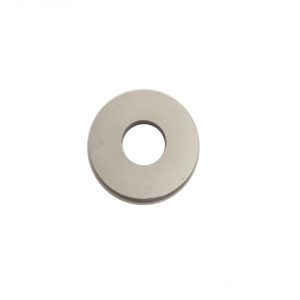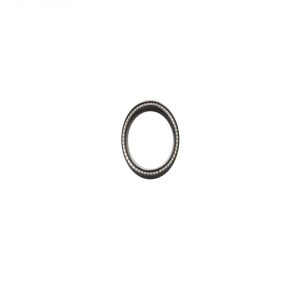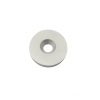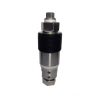PT. Setia Hati Tekindo one of Corrosion Specialist Company Providing a variety of products Corrosion Monitoring, Chemical, Cathodic Protection, Fitting, Instrumentation, Inspection and Services in various industrial plants specializing in oil and gas processing and petrochemical.
Multiple disc coupon available for pipes with diameters of 6 “or more. This method of protection against corrosion of the pipe offers the following advantages: Inherent orientation parallel to flow, greater area area at a specific level, greater quantity and variety of Coupon materials, easier monitoring in stratified flow or multi-phase flow, and the location of corrosion coupon in the assembly access recreation area for monitoring gas pockets or stagnant areas.
Multiple disc coupon 2″ system can be used to Monitor:
- Top of line
- Middle of line
- Bottom of line
Specifications:
| Material | AISI 1018, ASTM A106 gr B, or others |
|---|---|
| Weight | Below 50 gram union depend on the model, details will be listed on the envelope |
| Standard | NACE RP-0775 and ASTM G-1 |
| Dimension | OD:1.25″, Thickness 1/8″ |
| Refer | Catalog Bcormon |
| Material | PTFE Glass |
|---|---|
| Weight | 20 gr |
The Ring Type Joint flanges are typically used in high pressure (Class 600 and higher rating) and/or high temperature services above 800°F (427°C). They have grooves cut into their faces which steel ring gaskets. Check Here to Spiral Wound Gasket
Rod Corrosion Coupons standrd size is Ø ¼” x 3″ (Ø 6.3mm x 76.2mm) for 1″ systems corrosion monitoring, which are commonly used for oil and gas, upstream and downstream, chemical companies, etc.
Specifications:
| Weight | Below 50 gram union depend on the model, details will be listed on the envelope |
|---|---|
| Material | Stainless Steel, Carbon Steel |
| Dimension | Ø ¼” x 3″ (Ø 6.3mm x 76.2mm) |
| Refer | Catalog Bcormon |
Sacrificial Anodes are highly active metals that are used to prevent a less active material surface from corroding
A simple method of protection connects the metal to be protected to a more easily corroded “sacrificial metal” to act as the anode. The sacrificial metal then corrodes instead of the protected metal. For structures such as long pipelines, where passive galvanic cathodic protection is not adequate, an external DC electrical power source is used to provide sufficient current. Cathodic protection systems protect a wide range of metallic structures in various environments.
Common applications are:
steel water or fuel pipelines and steel storage tanks such as home water heaters; steel pier piles; ship and boat hulls; offshore oil platforms and onshore oil well casings; offshore wind farm foundations and metal reinforcement bars in concrete buildings and structures. Another common application is in galvanized steel, in which a sacrificial coating of zinc on steel parts protects them from rust.

Scale Inhibitor from diphosphonic acid (C2H8O7P2)blended and effective scale inhibitor used to prevent scale formation due to Calcium Carbonate,Magnesium Hydroxide and other common scale forming salts. No maintenance is required in carrying out the addition of this scale inhibitor. Its liquid form makes it convenient to use directly and the dosage level is determined with respect to the properties of the water to be treated.
PHYSICAL DATA
| Appearance | Clear Liquid |
| Color | Colorless |
| Solubility | Soluble in water |
| pH | 3.0 ~ 5.0 |
| Specific Gravity | 1.15 ~ 1.40 |
| Odor | Product specific |
| Viscosity | < 20 cSt |
HANDLING & SAFETY
Avoid contact with eyes, skin and clothing. In case of content eyes , immediately flush with water for 15 menutes and seek medical aid. Wash skin immediately if there is any contact and remove contaminated clothing.
DOSAGE
The optimum dosage will depend upon the type of the system and severity of the scaling
PACKING
20 liter per pail or 200 liter per drum
Solid Plug Body are the internal parts of the Access Fittings which act as the seal of access fitting to maintain the line pressure as well as the retrievable carrier for holding the monitoring devices. Used for various types of coupon holders, sacrificial sand probes and Chemical Injection/Sampling devices
The Standard Assembly Consists of:
| Solid Plug Body | 316L SS |
|---|---|
| Primary Packing | PTFE Glass |
| O-ring | Viton |
| Solid plug Nut with set screw | 316L SS |
| Pipe Plug | 316L SS |
Spiral wound gaskets is categorized as semi-metallic gasket that is typically used for high pressure applications. The sealing element is formed by winding two materials (one for sealing, one for resilience) into thin v-shaped spirals.
One material used in the sealing element is usually a metal and the other, referred to as a filler, which is a soft nonmetallic material, typically Teflon, aramid fiber or graphite. Both are chosen for compatibility with the sealing media and their ability to withstand the operating conditions. Different configurations exist to handle different flange designs and operating conditions.
These gaskets have good recovery and good tolerance for flange-surface finish irregularities. The sealing action is the result of a combination of the flow of the metal and soft filler plies when the gasket is compressed. They are particularily suited for assemblies subject to extremes in joint relaxation, temperature or pressure cycling, shock, or vibration













